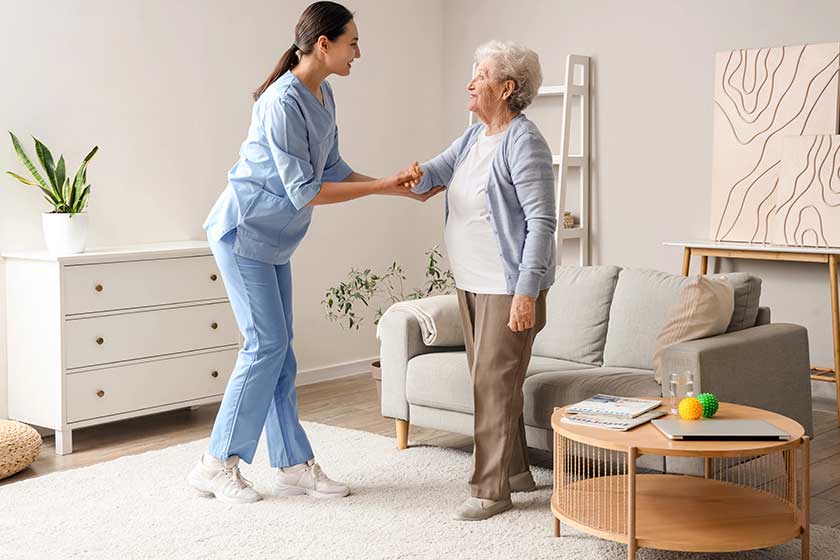Choosing the right Assisted Living options for you and your loved ones involves understanding how to prevent falls, which is vital for safety and maintaining an active lifestyle. Falls can greatly affect the quality of life, but with the right fall prevention tips, you can reduce these risks and enjoy a safer environment.
Understanding the Risk of Falls
Falls are a leading cause of injury among older adults, often leading to serious consequences such as fractures, hospitalizations, and a decrease in independence. Factors contributing to falls include muscle weakness, balance issues, vision problems, medications, and environmental hazards. By recognizing these risks, you can take proactive steps to prevent falls and enhance your well-being.
Creating a Safe Home Environment
One of the most effective ways to prevent falls is by making your living space as safe as possible. Start by ensuring all walkways are clear of clutter and well-lit. Install handrails on both sides of staircases and grab bars in bathrooms, especially near toilets and showers.
Non-slip mats and rugs can also reduce the risk of slipping. Regularly check for loose carpets, wires, or other tripping hazards that could cause a fall.
Improving Physical Fitness and Strength
Maintaining good physical health is essential for fall prevention. Engage in regular exercise that focuses on improving balance, strength, and flexibility. Activities like tai chi, yoga, and walking can significantly enhance your stability and coordination.
Exercise not only helps in strengthening muscles but also boosts your overall health and fitness, contributing to fall prevention.
Regular Health Check-ups and Medication Reviews
Regular visits to your healthcare provider are vital for monitoring your health and identifying any issues that could increase the risk of falls. Ensure your vision and hearing are checked annually, as poor sight and hearing can contribute to falls.
Additionally, have your medications reviewed by a doctor or pharmacist. Some medications can cause dizziness or drowsiness, increasing the likelihood of falling. Adjusting or changing these medications can help reduce your risk.
Using Assistive Devices
Assistive devices can provide additional support and stability. Depending on your needs, consider using canes, walkers, or other mobility aids. Make sure these devices are correctly fitted and used according to instructions. Additionally, consider installing raised toilet seats, shower chairs, and bed rails to assist with daily activities safely.
Wearing Proper Footwear
The type of footwear you choose plays a significant role in preventing falls. Wear shoes that fit well, have non-slip soles and provide adequate support. Avoid walking in socks or slippers that can cause you to slip. Regularly check your shoes for wear and tear and replace them when necessary.
Staying Hydrated and Eating Well
Proper nutrition and hydration are critical for maintaining your strength and balance. Dehydration can lead to dizziness and weakness, increasing the risk of falls. Ensure you drink enough water throughout the day and consume a balanced diet rich in vitamins and minerals. Foods high in calcium and vitamin D are particularly important for bone health.
Engaging in Social Activities
Isolation and loneliness can negatively impact your physical and mental health. Engaging in social activities and events can keep you active and mentally stimulated, reducing the risk of falls. Participate in group exercises, hobbies, and community gatherings to stay connected and involved. Social interaction also provides emotional support, which can positively influence your overall well-being.
Educating Yourself and Loved Ones
Education is a powerful tool in fall prevention. By understanding the risks and learning how to mitigate them, you and your loved ones can take effective measures to stay safe. Attend workshops, read educational materials, and seek advice from healthcare professionals on the best practices for fall prevention.
Monitoring and Adaptation
Fall prevention is an ongoing process that requires regular monitoring and adaptation. Continuously assess your environment and health status to identify new risks and address them promptly. Stay informed about new fall prevention strategies and incorporate them into your routine.
Taking these proactive steps can significantly reduce the risk of falls and help you maintain an active, independent lifestyle. Remember, the key to effective fall prevention lies in a combination of creating a safe environment, maintaining good health and fitness, and staying informed.
If you are considering a personal care community where safety and well-being are prioritized, we invite you to explore our offerings. We are dedicated to providing a supportive environment that promotes independence and quality of life.
Contact us to learn more about how we can assist you and your loved ones in achieving a safe and fulfilling lifestyle.







